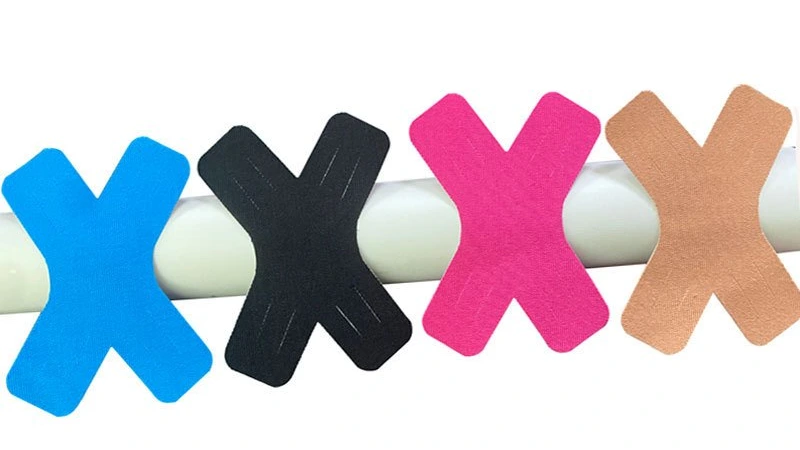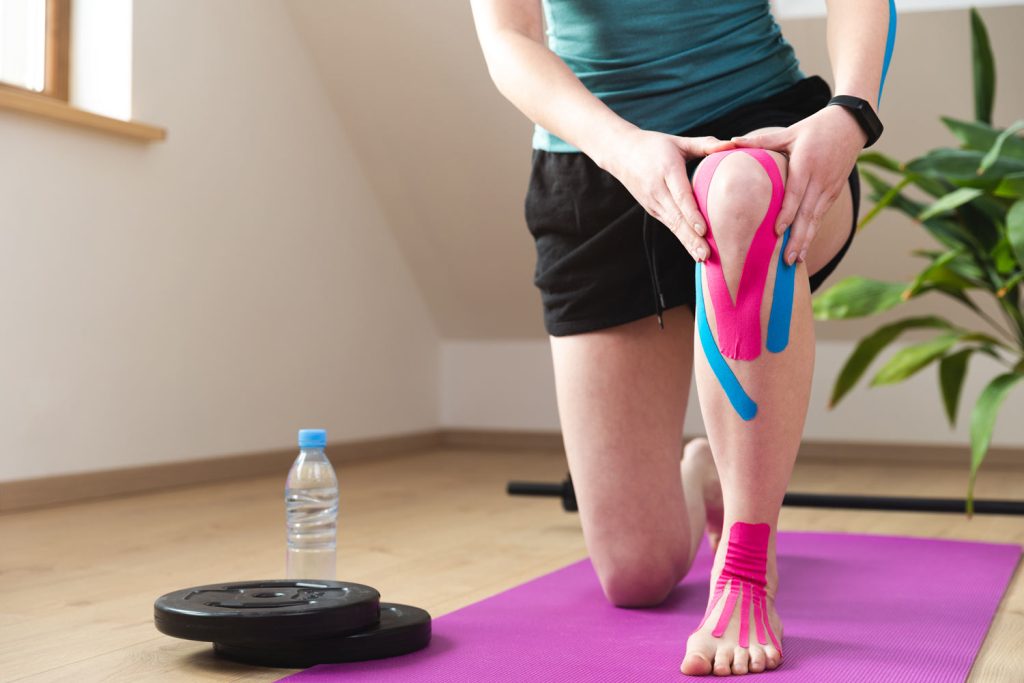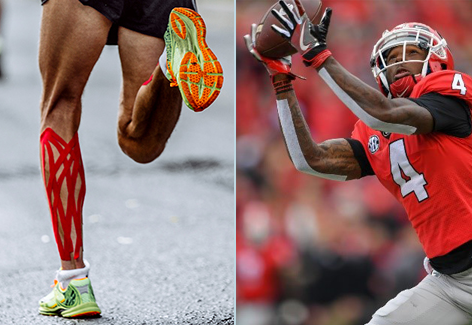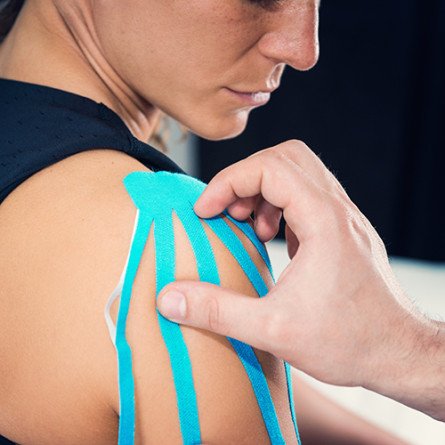If you’ve ever dealt with a sports injury or watched an athlete in action, chances are you’ve seen tape—lots of it. But not all tape is created equal. Two of the most commonly used types are sports tape (also known as athletic tape) and kinesiology tape (often branded as KT Tape). While they might look similar at first glance, they serve very different purposes.

So, what exactly is the difference between sports tape and kinesiology tape? Let’s break it down.
What Is Sports Tape?
Sports tape, or athletic tape, is a non-elastic, rigid tape typically used to:
- Immobilize joints or restrict movement
- Prevent injury during physical activity
- Support unstable areas, especially after sprains or strains
- Be applied before exercise and removed shortly after
Because it doesn’t stretch, sports tape is ideal for limiting excessive motion in areas like ankles, wrists, or thumbs. It’s a go-to for athletes needing strong support during high-impact activities.
What Is Kinesiology Tape?
Kinesiology tape is a stretchable, elastic tape designed to move with your body. It’s usually made from cotton with a wave-pattern adhesive, mimicking the flexibility of skin. It’s commonly used to:
- Support muscles and joints without restricting range of motion
- Improve circulation and reduce swelling
- Relieve pain by altering how your brain perceives discomfort
- Promote healing during and after activity
Unlike sports tape, kinesiology tape is often worn for several days—even while showering or sleeping.
Key Differences at a Glance
| Feature | Sports Tape | Kinesiology Tape |
|---|---|---|
| Stretchability | Non-elastic | Highly elastic (up to 180%) |
| Function | Restriction and stabilization | Support and pain relief |
| Duration of Use | Short-term (during activity) | Long-term (1–5 days) |
| Application Purpose | Immobilize or limit movement | Encourage natural healing |
| Flexibility | Rigid, no give | Flexible, moves with your body |
Which One Should You Use?
- Use sports tape if you need strong support and joint immobilization, especially right after an acute injury or for high-risk sports like football or volleyball.
- Choose kinesiology tape if you’re dealing with muscle fatigue, minor pain, or swelling, and still want to keep moving freely.
The best option often depends on your specific needs, injury type, and recovery goals.
Final Thoughts
Both sports tape and kinesiology tape have unique roles in athletic performance and recovery. They aren’t interchangeable, but when used correctly, each can be a powerful tool in your fitness and rehab routine.
Looking for quality, skin-friendly kinesiology tape? Fonitaniya offers durable, breathable kinesiology tape designed for all-day comfort and reliable support—whether you’re training, competing, or recovering.




